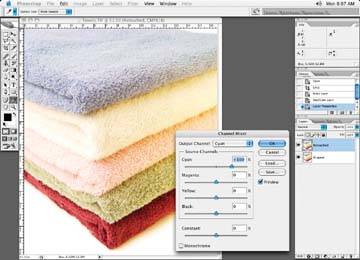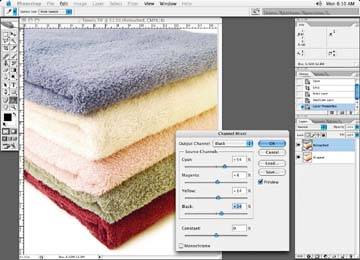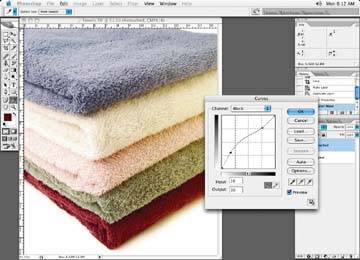Another way you can introduce shape into an image that doesn't have much shape to start with is with the Channel Mixer correction tool (Figure 3-18).
Figure 3-18. The Channel Mixer tool with original image

Start by determining which of the various color channels has the most shape to it.
Let's suppose the cyan channel has the most shape. Call up the Channel Mixer tool (Tools » Image » Adjustments » Channel Mixer) and transfer the information from the cyan channel to another channel that will complement or enhance the color of the image.
Depending on the image, a good safe bet would be to transfer the shape into the black channel (Figure 3-19), as black doesn't change the hue or color of the image, it is there to add shape and contrast to an image. If the black dirties the image too much, you'll have to mix the cyan channel into the other color channels in balance so that the hue of the area doesn't change (Figure 3-20). Again, keeping the color in balance means retaining the original color of the image but making it darker or lighter.
Figure 3-19. Before: the original image with a black change in the Channel Mix

When you call up the Channel Mixer tool, at the top of the dialog box, you'll see the Output channel. The Output channel is the color channel that any changes to the slider will affect. The Source channels are where you pick up the information. For instance, if the Output channel is set to black and you drag the Source channel slider of the cyan channel to +100, then 100% of the cyan channel will be added to the black channel.
Figure 3-20. After: image with lots of new information in the black channel

So as you can see, you can take information from one channel and mix it into another channel very easily.